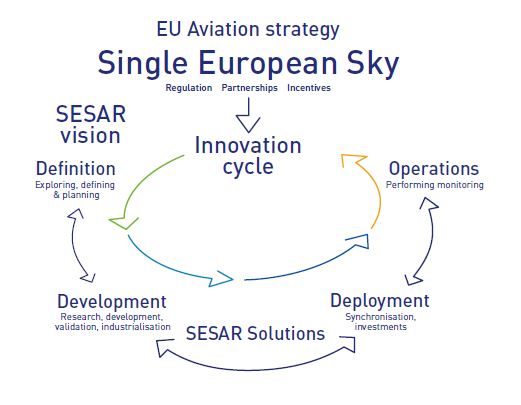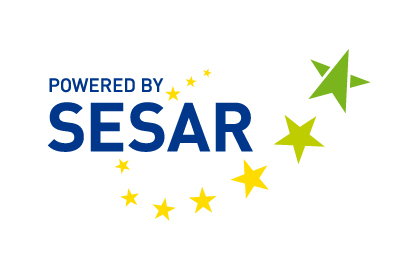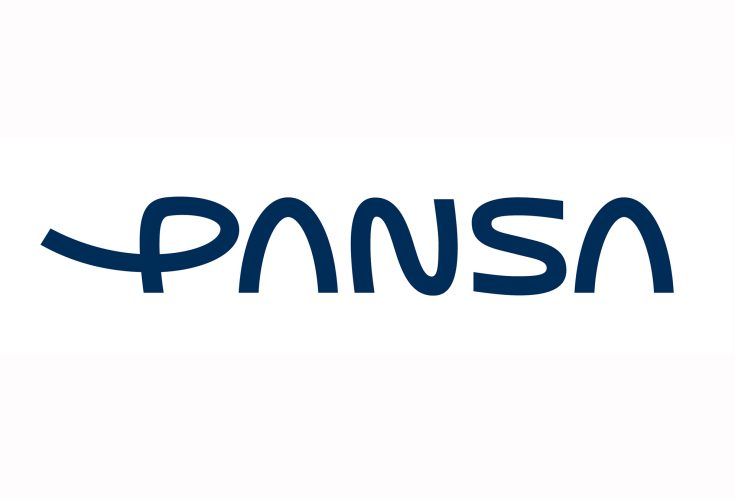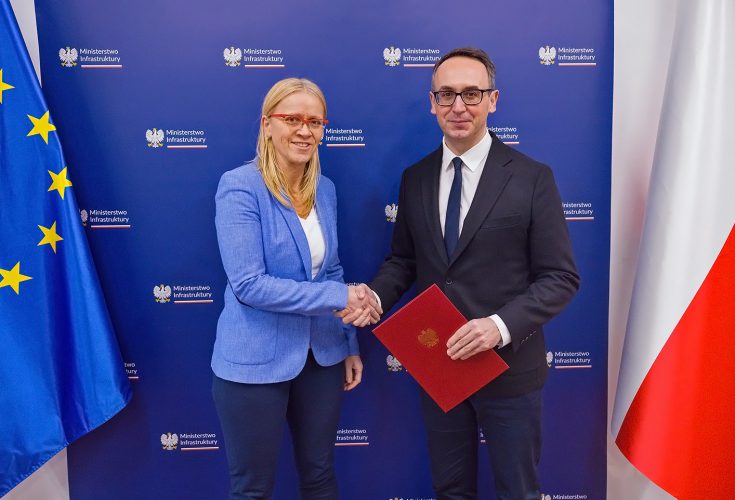Polish Air Navigation Services Agency takes active part in the process of implementation of the SESAR (Single European Sky ATM Research) programme aiming to develop new ATM infrastructure, that would combine fully synchronized and interoperational components in order to ensure the highest level of efficiency of the ATM system in Europe.
What is SESAR?
SESAR is the technological pillar of the Single European Sky (SES) initiative. It joins the area of research and development with the implementation process. Its goal is to develop and implement new and unified infrastructure and system solutions for the European ATM, capable of ensuring air transport safety and its efficiency in Europe in the long term. It is also intended to provide a highly effective air traffic control infrastructure in the European Union that will enable safe and environmentally friendly development of air transport.
To better understand the substance of the SESAR program, one shall refer to the history of the SES initiative. Its foundations can be traced back to December 1999, when the European Commission issued the first communication COM/99/0614 to the Council and the European Parliament on the creation of the Single European Sky. It was a response to the large number of delays in air operations in Europe, as well as a way to meet the changing needs of the aviation market. The initiative was to support the synchronization of air traffic management in a heavily fragmented European sky. As a result, the first package of common requirements establishing a Single European Sky was created. It was adopted in March 2004 in the form of four regulations at EU level and entered into force the following month.
The SES package was aimed at increasing the level of safety and efficiency of European air transport, reducing the number of delays by improving the capacity of airports and airspace itself, and refining the provision of navigation services. It was also meant to reduce operating costs by reducing fragmentation of air traffic management, as well as to improve the integration of military systems with the European network. The key was to introduce a systemic change of outdated solutions and modify existing network of air routes that were based on national borders.
Defining, developing and finally implementing new solutions, enabling the necessary changes to be introduced, was to take place as part of the SESAR program, the first phase of which began in 2004.
The SESAR programme has been divided into three phases:
- Definition phase – including determining the directions of development of the European air traffic management system.
The first part of this phase ended in 2008 with the release of the European ATM Master Plan (a central document on the modernization of the European ATM system), which is regularly updated as part of the European Aviation Innovation Cycle;
- Development phase – covering all research and development activities, the aim is to create and validate new operational and technological solutions.
This phase is coordinated by SESAR Joint Undertaking (SJU) public-private partnership;
- Deployment phase – covering the industrialization and implementation of solutions developed in the Development phase and meeting the requirements of the European ATM Master Plan.
This phase is coordinated by SESAR Deployment Manager (SDM). The institution is responsible for ensuring synchronization and overall coordination of implementation projects and related investments in accordance with the assumptions of the SESAR Deployment Programme.
PANSA in the SESAR programme
SESAR is a comprehensive programme and although it is split into stages realized by various entities, it should be seen as a whole. It covers the full product life cycle, which actually begins in the stage of defining the needs of the air traffic management (ATM) sector. It is followed by a research and development phase, within which the scope of activities is determined, a feasibility study is carried out, as well as the conceptual and then technological development of the solution executed. Then the solution is implemented and synchronized with operating systems, until finally the project is finalized and launched operationally and functions in the operating environment until it becomes outdated or worn out, and is replaced with a modern and more current solution. Thus, SESAR enables active modernization of solutions used in air traffic management, introduction of innovative technologies and keeping pace with changes dictated by the aviation market – both in Poland and throughout Europe.
PANSA currently has projects in all different stages of development or implementation. These projects are realized by PANSA alone or with partners under the SESAR programme. The Agency is participating in several dozen projects in the research and development phase and the implementation phase.
Participation in SESAR allows PANSA to finance and conduct its own development works so that the effects of implemented projects can be used across the whole European ATM system and bring benefits to air transport and the entire air network. The effect of the works is visible in almost all projects focused on development of air traffic management systems, which, thanks to implementation under the SESAR programme, can become uniform with the tools used in other parts of Europe.
In the area of implementation, PANSA’s activities largely result from regulatory matters, i.e. the provisions of Commission Implementing Regulation (EU) 716/2014 on establishing a joint pilot project supporting the implementation of the European ATM Master Plan. The agency is obliged to implement the solutions specified in this legal act, the so-called ATM functionalities, while being part of the process of coordinated and synchronized implementation of the elements of the SESAR programme in Europe.
Effectively, by participating in the SESAR programme, the Agency implements the objectives of the initiative and increases the level of safety of air operations, improves airspace capacity and reduces the negative impact of aviation on the environment.

ATM project life cycle. Source: ATM Master Plan, 2020 Edition




